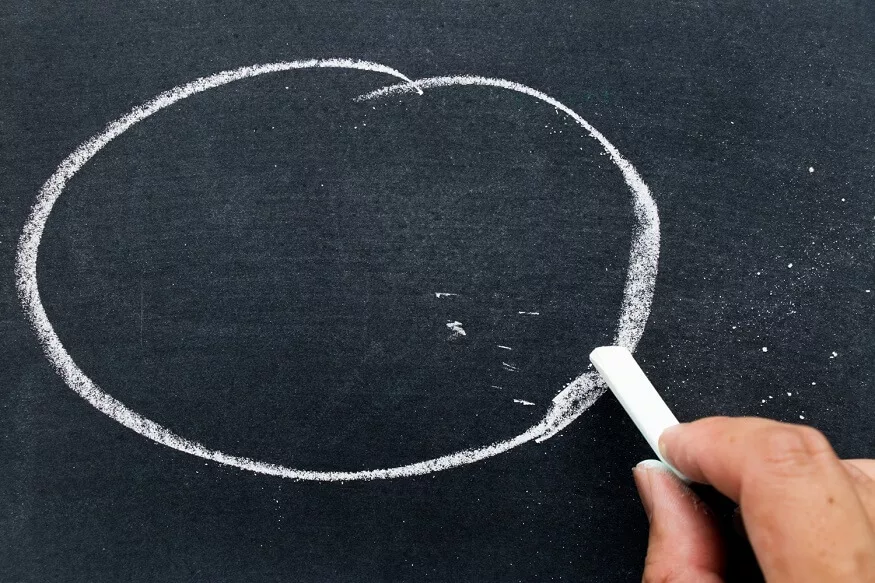Huge water reserves are found beneath the surface of the Earth thanks in large part to the role that rocks perform as natural sponges that absorb and release water over time. Furthermore, the study of minerals, or mineralogy, is not limited to Earth; researchers have found materials that resemble minerals on Mars, raising the possibility of interplanetary geological ties.
In this, we will explore the hidden gems that lie beneath the Earth’s surface: the secret worlds of rocks and minerals. These geological wonders have secrets hidden beyond their surface attractiveness that whisper of millions of years of influence, extending not only to our globe but also to far-off worlds.
Rocks and Minerals: The Dynamic Duo of Nature
It is crucial to understand that rocks are essentially mineral mixtures in order to fully appreciate the complexities of different types of rocks and minerals. Minerals are the naturally occurring components that make up the crust of the Earth. They have unique chemical compositions and crystal shapes. Imagine rocks as a superhero team, with the minerals serving as each member’s special superpower. When combined, they form the basic framework that supports our world.
Rocks and different types of minerals play pivotal roles in shaping Earth’s landscape, from the towering peaks of majestic mountains to the serene shores of sandy beaches. Their diverse forms and compositions contribute to the captivating tapestry of landscapes worldwide.
Exploring the Spectrum of Rock Varieties
Let’s commence our exploration with a fundamental understanding of the different types of rocks, categorised primarily into three groups: igneous, sedimentary, and metamorphic.
- Igneous Rocks: Picture the spectacle of molten lava erupting from a volcano. As this molten lava cools and solidifies, it metamorphoses into igneous rocks. Examples of these geological wonders include granite and basalt. These rocks emerge from intense heat and pressure and bear witness to the fiery origins of their existence.
- Sedimentary Rocks: Envision layers accumulating over time, akin to the pages of a book narrating Earth’s saga. Sedimentary rocks, such as limestone and sandstone, materialise from the gradual accumulation and compression of sediment. Within their stratified layers lie the enigmatic records of ancient environments and life forms.
- Metamorphic Rocks: Visualise rocks undergoing a metamorphic transformation, much like a superhero evolving to acquire new powers. Metamorphic rocks, exemplified by marble and slate, result from the alteration of existing rocks under high pressure and temperature. They stand testament to the Earth’s incredible capacity for change and adaptation.
By acquainting themselves with different types of rocks, children can bear witness to the extraordinary processes that have sculpted and continue to shape our planet.
Also Read: Traffic Signs and Traffic Rules for Kids
Diving into the Kaleidoscope of Minerals
Shifting our focus to the dazzling kaleidoscope of minerals, we encounter a breathtaking array of colours, shapes, and sizes, each possessing unique properties.
- Quartz: recognized as a transparent marvel in the mineral world, is celebrated for its beautiful crystals and remarkable durability. This robust mineral frequently features prominently in the makeup of rocks, such as granite and sand, playing a key role in shaping their distinct qualities.
- Feldspar: A mineral that resembles a vivid rainbow with its diverse spectrum of colours. Commonly found in igneous rocks, Feldspar manifests in hues of pink, white, and grey, adding a vibrant touch to the geological canvas. Its presence not only enhances the visual appeal of rocks but also serves as a testament to the stunning diversity within the Earth’s crust.
- Mica: A mineral with the extraordinary ability to effortlessly split into thin, flexible sheets. Mica’s captivating property makes it a remarkable and visually intriguing component of metamorphic rocks. Its presence in these rocks adds a layer of fascination, showcasing the dynamic transformations that take place beneath the Earth’s surface.
Also Read: What are Animal Walks: How To Incorporate It Into Kids’ Routine
Rock Collecting for Kids: An Educational Odyssey Blended with Fun
Now that the foundation has been laid, let’s delve into the exciting realm of rock collecting for kids. It transcends mere hobbyists; it’s an adventurous journey that seamlessly blends fun and education.
- Commence with the Basics: Initiate the journey by identifying rocks prevalent in your immediate surroundings. Seek out igneous rocks near volcanic areas, sedimentary rocks in riverbeds, and metamorphic rocks in hilly terrains. This hands-on approach ensures children establish a direct connection with their local geological environment.
- Utilise Tools of the Trade: Equip budding geologists with a magnifying glass and a small hammer, transforming a simple walk into a geological expedition. With these tools, children can examine the textures, colours, and mineral compositions of the rocks they collect, unlocking a deeper understanding of the geological wonders they encounter.
- Create a Rock Collection: Encourage youngsters to organise their finds into a curated collection. Label each rock with its type and the location of discovery. This not only enhances organisational skills but also fosters a sense of accomplishment, as children witness the tangible results of their exploratory efforts.
- Embark on Field Trips: Elevate the educational experience by organising field trips to local museums or geological sites. Witnessing impressive displays of rocks and different types of minerals can inspire a deeper interest in the earth sciences, enriching the overall rock-collecting experience.
Also Read: Self-Defence For Kids: Meaning, Benefits and Techniques
Nurturing a Lifelong Passion for Rocks and Minerals
By introducing children to the captivating universe of rocks and minerals, we instil in them the seeds of a lifelong love for science and discovery. This fascination extends beyond a mere curiosity about Earth’s history; it fosters environmental awareness and conservation.
- Science in Everyday Life: Rocks and minerals transcend the confines of textbooks; they constitute an integral part of our daily lives. From the gravel lining our driveways to the marble gracing our kitchens, these geological wonders are omnipresent.
- Comprehending the Earth’s Mechanisms: Investigating the realm of rocks and minerals offers a significant understanding of the mechanisms that have moulded our globe. It’s similar to cracking a secret code that reveals the complex narrative of Earth’s historical evolution.
- Environmental Stewardship: As children develop a tangible connection with the Earth through rock collecting, they are more likely to cultivate a profound sense of responsibility towards the environment. This early awareness lays the foundation for future generations to evolve into conscientious stewards of our precious planet.
Rocks and minerals transcend their status as static components of the Earth’s crust; they emerge as dynamic storytellers, recounting the narrative of our planet’s odyssey through time. By immersing themselves in the exploration of different types of rocks, unravelling the wonders of minerals, and engaging in the pursuit of rock collecting, children embark on an enthralling adventure that not only sparks a passion for science and nature but also forges a lasting connection with the geological marvels that surround us. So, seize a magnifying glass, don your explorer hat, and let the captivating journey into the mesmerising world of rocks and minerals unfold!
Also Read: How To Teach Sustainable Habits To Kids
As part of its mission to provide an educational experience that is comprehensive, EuroSchool places a particular focus on nurturing children’s curiosity and discovery. The importance of experiential learning outside of the traditional classroom is acknowledged by the institution. One such captivating program is the “Exploring Rocks and Minerals” initiative. Through a series of interactive activities and engaging sessions, EuroSchool strives to ignite a sense of wonder in young minds about the geological marvels that surround them.
In addition to introducing pupils to a variety of rocks and different types of minerals, this programme encourages them to go out on a quest of exploration and develops an interest in science and environmental consciousness. In order to foster a passion of learning that goes beyond textbooks, EuroSchool integrates real-world experiences into the curriculum. This fosters a lasting connection for students with the captivating world of rocks and minerals.










